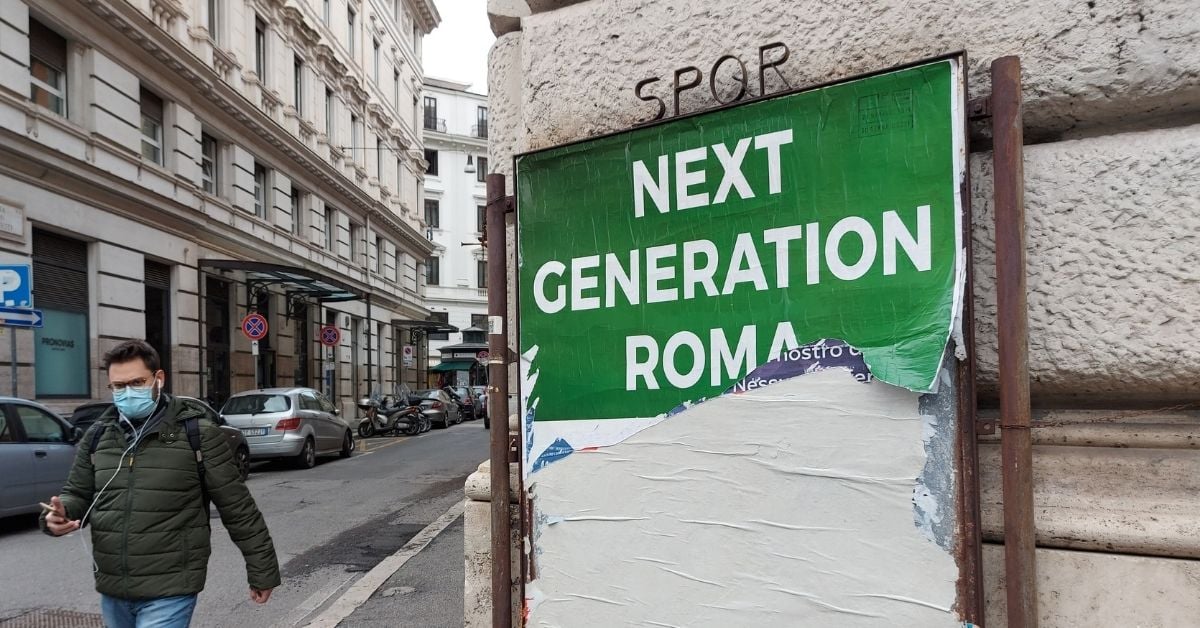
Today, the Italian government is presenting the “national plan of recovery and resilience” (PNRR after the Italian acronym) to the European Commission. Earlier this week, the Italian Parliament approved the 270 page text. If the plan is approved by the EC, the first projects can start this summer.
Ecological transition
Italy’s plans for the next six years, which will benefit from 191.5 billion euros from the Next Generation EU fund, focus on innovation, ecological transition and digitalization. If it were up to Italy, more than 100 billion euros would be spent on investments in these sectors. The brand new Ministry of Ecological Transition, headed by Roberto Cingolani, has an important finger in the pie.
These are important indicators that the money is also being well spent. The ‘PNRR’ relies heavily on European objectives, such as the Green Deal, which aims to make Europe the first climate-neutral continent by 2050. The European Union’s hydrogen strategy is also being fully embraced, partly because Minister Cingolani is a firm believer in it. The plan therefore provides for special ‘hydrogen valleys.’ These are mostly disused industrial areas, where (heavy) industry is to run on hydrogen.
70 percent sustainable energy
If the plan is implemented exactly as stated (and red tape and corruption don’t have a hand in it), Italy is going to get about 70 percent of its electricity from renewable energy sources by 2030. The plans incorporate numerous other smaller targets, such as the pledge to add over 21,000 electric charging stations and an additional 4.3 million square meters of solar panels by 2026. Now Italy is lagging well behind when it comes to benchmarking. For example, in terms of digital penetration and technological innovation, the country ranks number 24 out of 28 European countries (according to the Digital Economy and Society Index). Only Bulgaria, Romania, Poland and Greece are doing worse.
19 islands will be turned into laboratories to make them 100 percent green and self-sufficient.
The plans aim for an integrative approach. A prime example is the development of green islands. One problem facing the (approximately 75) smaller, inhabited islands in Italy is that they are, for the most part, not connected to the national electricity grid. For example, energy generation in many cases relies on old thermoelectric plants, while distribution goes through a fragmented network of small medium- and low-voltage power plants. Other problems involve scarce water resources and waste management.
Locally generated power
Nineteen such islands are designated to become laboratories, with the goal of making them 100 percent green and self-sufficient. To this end, renewable energy plants (especially solar and wind) and energy storage will be built and the electricity system integrated with the island’s water system. Desalination plants are also being used and as much separated waste as possible is being processed in-house. Italy is the European leader when it comes to the collection of separated waste.

Another integrated project are the establishment of -initially- 30 green communities (the ‘PNRR’ uses the English term). This refers to the development and management of small communities and the surrounding countryside, (which in Italy is mostly a hill or mountain landscape), in order to link housing, agriculture, forestry, economic activities and recreation. The aim here is also to achieve self-sufficiency.
Digital infrastructure
For example, communities must provide their own locally generated power, such as power generated through micro-hydropower plants, biomass, biogas, wind, cogeneration and biomethane. Sustainable agriculture, sustainable tourism and sustainable waste management are other key themes. Of course, this requires that the communities be connected better digitally. Right now, digital infrastructure in Italy has a very long way to go. The plan aims to provide the entire country with connections of 1 Gbps by 2026. For this, 14 billion euros is being set aside. The green communities are intended as the answer to the drastic depopulation of the Italian countryside.
Strong Europe
Italy is the biggest beneficiary of the Next Generation fund EU. The pandemic hit the Italian economy harder than those of other European countries. In 2020, gross domestic product shrank by 8.9 percent, compared to an average European Union decline of 6.2 percent. Italy is also more affected than other countries by the effects of climate change (floods, etc.). In addition, the country has experienced barely any economic growth for twenty years (less than 0.5 percent per year). The idea is that a strong Italy is good for Europe.
In addition to the EU Next Generation fund, Italy is also tapping into what is known as the React EU fund, a smaller pot of money, as well as an Italian government fund created this month. In total, 248 billion euros is available until 2026.
You can also read about the new Italian Ministry of Ecological Transition here.

